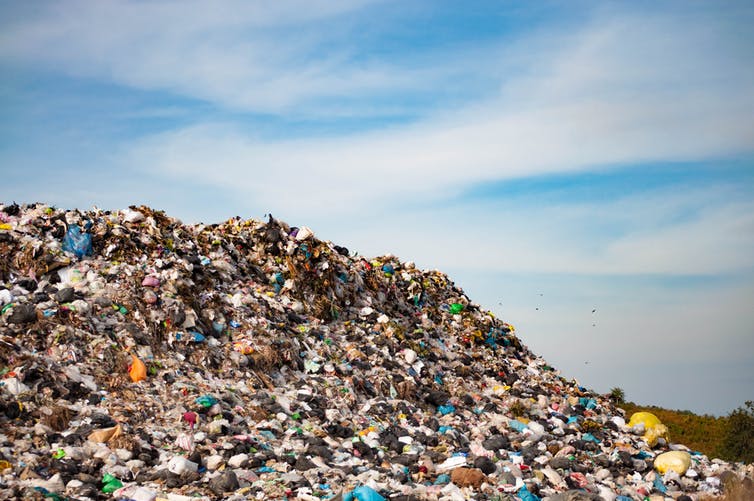The Silent Killer: Air Pollution in California
The Silent Killer. Air pollution is the release of chemicals into the atmosphere which leads to health effects on humans and other living beings, which causes damage to the climate 1. There are various types of air pollutants: biological molecules, gases (ammonia, carbon monoxide, sulfur dioxide, nitrous oxides, methane, and chlorofluorocarbons), and particulates (organic and inorganic) 1. According to the American Lung Association’s recent “State of the Air 2017” report, California is a leader in air pollution among other states, with the highest ozone levels 2. According to IQAir, in 2018, air pollution estimated to have contributed to an additional 9,700 premature deaths and an economic cost of $89 billion 3. Mobile sources, stationary sources, area-wide sources, wildfires, and the burning of fossil fuels are the most important sources for air pollution in California 4. Not only does air pollution have harmful effects on humans, but also it can cause a negative impact on the environment and economy.
Global Air Pollution Sources:
- Natural sources:
- Wildfires
- Volcanoes
- Mobile sources:
- All on-road vehicles such as automobiles and trucks
- Off-road vehicles such as trains, ships, aircrafts
- Agricultural equipment
- Stationary sources:
- Factories
*In California, there are approximately 13,000 individual facilities and about 135 aggregated point source categories. These facilities and categories release huge emissions into the atmosphere 4.
- Area-wide sources:
Area-wide source category include human activity such as consumer products, paints, architectural coatings used in region, and products containing solvents. 4
What Are The Consequences of Air Pollutants?
The pollutants include of primary and secondary pollutants. Primary pollutants are pollutants that emitted directly from particular sources which include particulates, carbon monoxide, nitrogen oxide, and sulfur oxide 5; Secondary pollutants are pollutants that formed in the lower atmosphere by chemical reactions which include ozone, nitric acid, and sulfoxylic acid 5. When nitric acid combines with sulfoxylic acid it causes acid rain that has a huge impact in our life. Smog is another example of air pollution that is resulting from combining primary and secondary pollutants which leads to creating a thick haze that can be seen hovering over the city 6. Smog could impact our capacity to breathe causing underlying health conditions to worsen 6. Warm temperatures and abundant sunshine, bake nitrogen oxides and volatile organic compounds which lead to the creation of ozone. As summer temperatures rise, ozone levels will continue to increase in California 7.
Wildfires in California are a major contributor to air pollution as well. According to the California state record, By the first week of September in 2020, more than 5.2 million acres across the western US had burned, 3.2 million of which were in California 7.
- If you would like to know the reasons why California considered as the dirtiest air in the world, watch this video. https://www.youtube.com/watch?v=zlVFWcmzueo
- To learn more about IQAir California air quality map please visit: https://www.iqair.com/usa/california
How Air Pollution Impacts Human Health, The Environment, And The Economy:
Human Health:
Exposure to high levels of air pollution can increase the number of illnesses and deaths. Studies found that some pollutants could affect pregnancy. According to several epidemiological studies, exposure to air pollution can decrease birth size, increase sexual development, and alter levels of hormones related to gland regulation 8. In addition, CARB has recognized around 200 pollutants as air toxins 9. From all air toxions, there were about 730 per million total cancer risks 9. As a result of this total, 520 per million are consequent diesel particulate matter. Removing diesel particulate matter from the air would estimate yearly health impacts such as 1,400 premature deaths, 200 hospitalizations, and 600 emergency room visits 9. High temperatures that are resulting from climate change could cause more diseases and deaths as well. For example, increasing allergens in the air like pollen will result in worsened allergies, and increases in disease-carrying mosquitoes and other pests which leads to elevated disease risk 9.
Economy:
According to findings released Wednesday by a Cal State Fullerton research team, the California economy loses almost $28 billion annually because of illnesses and premature deaths connected to ozone and particulates emitted from hundreds of areas in the South Coast and San Joaquin air basins 10.
“The annual global welfare costs associated with the premature deaths from outdoor air pollution, calculated using estimates of the individual willingness-to pay to reduce the risk of premature death, are projected to rise from USD 3 trillion in 2015 to USD 18-25 trillion in 2060. In addition, the annual global welfare costs associated with pain and suffering from illness are projected to be around USD 2.2 trillion by 2060, up from around USD 300 billion in 2015, based on results from studies evaluating the willingness-to-pay to reduce health risks.11” (The William and Flora Hewlett Foundation, 2006).
According to a study, the health impacts of air pollution drain the economy about $3 billion every year in the San Joaquin Valley. The study estimated the cost of pollution in Central Valley averages $1,000 per person per year which demonstrates the cost of premature deaths, acute bronchitis in children, asthma attacks, lost workdays, and school absences.
Environment:
When the Clean Air Action Plan implemented in 2006, particulate matter (PM) from the operations had declined by 87%, and nitrogen oxides had dropped to 58%. Nitrogen oxides is a significant precursor pollutant to ozone. However, the port is an important source of air pollution where it is producing an estimated 100 tons of smog daily 10. Air pollution can damage the environment through causing global warming, climate change, deterioration of fields, and extinction of animal species. Global warming is one of the direct consequences that is resulting from the greenhouse effect. Most of the industries and factories produce high emissions of CO2 and methane into the air which can cause global warming. Since the industrialization era, the carbon footprint has increased in the atmosphere due to human activities. These days, the carbon footprint in the atmosphere is becoming unpredictable compared with the past 80,000 years. This increase has caused a positive climate forcing or warming effect. According to the environmental protection Agency, the total warming effect from greenhouse gases increased by 45% in the atmosphere from 1990 to 2019. As a result, the warming effect associated with carbon dioxide alone increased by 36 percent 17. Climate change has a global warming impact on the climate. Global warming has many effects such as droughts, floods, hurricanes, and sea-level rise. All of these changes are referring to climate change term 18. The two main reasons that cause the sea level rise are the increasing the temperature which leads to ice melting and warming the water in the ocean which leads to expanding the volume of the water. Increasing the volume of the sea level rise will lead to seasonal flooding 18.
Heat waves, heavy downpours, and sea-level rise pose growing challenges to many aspects of life in the Northeast. Infrastructure, agriculture, fisheries, and ecosystems will be increasingly compromised. Many states and cities are beginning to incorporate climate change into their planning 18.
Extreme heat, heavy downpours, and flooding will affect infrastructure, health, agriculture, forestry, transportation, air and water quality, and more. Climate change will also exacerbate a range of risks to the Great Lakes.18.
How is California Taking The Steps to Reduce Air Pollution?
Even though California is facing environmental challenges such as global pandemic and unprecedented heat and wildfires. In 2020, California invested more than $3.1 billion in more than 51,000 projects across California’s 58 counties to combat the effects of air pollution 14. For example, California Climate Investments projects assisted plant more than 133,000 urban trees, lowered smog-forming and other air pollutants through more than 60,000 tons, added more than 7,200 new affordable housing units, and economized about $93 million through water energy‑efficiency projects 15.
In 1943, California residents noted that the smog was causing harmful outcomes such as irritated eyes, burning lungs, coughing, and nausea 16. Therefore, the Mulford-Carrell Air Resources Act established by state legislatures to create California Air Resources Board (CARB) which unites residents, businesses, and local governments to treat California’s high air pollution levels with proposed and research legislation 16. As a result, in 1970, the federal Clean Air Act helped to eliminate air pollution emissions to develop public health. The most important amendments were in 1977 and 1990, which recognized 174 common emission sources and improved unique standards for each 16.
It is estimated that the success of the 1990 amendments have prevented 237,000 deaths up to 2020, as well as improving the health of countless more 16. (William and Flora Hewlett Foundation, 2006)
It estimated to be around 6.5 million vehicles in the city of Los Angeles alone in 2018. Mayor of Los Angeles Eric Garcetti has established a sustainability plan that states to raise zero-emission vehicles in the city and to raise their share from 1.4% to 100% from 2018 to 2025 14.
Many programs have been established to reduce greenhouse gas emissions, including a Zero Emission Vehicle mandate, which is planned to clean up the transportation sector and add about 1.5 million hydrogen fuel cell vehicles to the roads by 2025 16. (William and Flora Hewlett Foundation, 2006).
Moreover, many Californian cities offer financial incentives, offering tax, and enlarging the network of electric vehicle (EV) charging stations to encourage residents to transition to electric vehicles and to increase public transportation infrastructure 16.
What You Can Do To Promote Cleaner Air in California and Beyond?
Even though California is facing environmental challenges such as global pandemic and unprecedented heat and wildfires, in 2020. It is our time to protect our ecosystem from air pollution. Here are ten ways that help reduce air pollution 19 .
1. Walk or ride a bike, when possible, take public transportation or carpool.
2. Support the Smog Check Program.
3. Turn the lights off when you leave a room, harness the power of the sun, open the blinds and turn off the lights.
4. Replace energy-hungry incandescent lights with compact fluorescent light bulbs.
5. Recycle paper, plastic, metals, and organic materials.
6. Eat locally, shop at farmers markets and buy organic products.
7. Use an electric or push lawn mower.
8. Use water-based cleaning products that are labeled “zero VOC’.
9. Plant a tree.10. Turn off office equipment, computers, printers, and fax machines, after hours.
- Want to learn more about air pollution in California: https://www.momscleanairforce.org/state-chapters/
- Let’s take some action to protect our children from climate-warming methane pollution: https://act.momscleanairforce.org/XlzSoDF
Sources:
- https://www.nrdc.org/stories/air-pollution-everything-you-need-know
- https://www.sciencedaily.com/releases/2017/06/170619092749.htm
- https://insurancenewsnet.com/oarticle/wildfires-made-california-air-quality-among-worst-in-the-world-even-during-pandemic
- https://pollution.ucr.edu/sources-air-pollution-so-cal
- https://pollution.ucr.edu/primary-vs-secondary
- https://ww2.arb.ca.gov/our-work/topics/air-pollution
- https://www.iqair.com/usa/california
- https://www.ncbi.nlm.nih.gov/pmc/articles/PMC7491915/
- https://ww2.arb.ca.gov/resources/health-air-pollution
- https://www.latimes.com/archives/la-xpm-2008-nov-13-me-pollute13-story.html
- https://hewlett.org/newsroom/new-study-finds-central-valley-air-pollution-costs-regional-economy-3-billion-annually/
- https://www.mass.gov/doc/health-environmental-effects-of-air-pollution/download
- https://www.tecamgroup.com/effects-air-pollution-environment/
- https://ww2.arb.ca.gov/news/record-year-california-climate-investments-31-billion-invested-2020-across-california
- https://www.iqair.com/usa/california
- https://hewlett.org/newsroom/new-study-finds-central-valley-air-pollution-costs-regional-economy-3-billion-annually/
- https://www.epa.gov/climate-indicators/greenhouse-gases
- https://climate.nasa.gov/effects/








